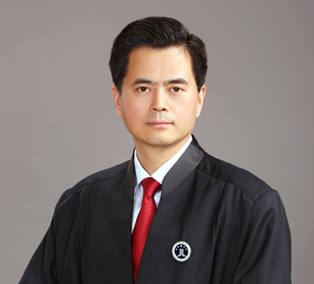Chinese manufacturing industry relying on IPR to narrow the gap with developed countries
The rapid development of Chinese industrialization greatly advances comprehensive national power, improves people's lives and raises China's international status and influence. Just as Premier Wen Jiabao said on Hannover Messe, China has grasped a series of key technologies with indigenous intellectual property rights through technological innovation and tremendously narrowed the gap with developed countries in the field of manufacturing.
Grasping core patents and narrowing technological gap
China's manufacturing industries have revived since the reform and opening-up in 1978. Especially during the 10 years after China's entry to the WTO, such manufacturing industries as ships, automobiles, engineering machinery, electronics and communications saw a rapid development, with patent filings and grants increasing obviously. Such developments in turn drove the demand for raw materials of heavy machinery, mould and iron and steel and ultimately promoted the whole manufacturing development.
Textile industry as the most typical sector not only survived from the global economic crisis but also reaped an innovation harvest by implementing intellectual property rights. According to statistics, Chinese textile industry only filed 8,053 domestic and foreign patent applications in 2002, but in 2011, domestic and foreign patent applications granted and published by the State Intellectual Property Office reached 49,814. A batch of national textile brands such as Ordos and Younger stood out among others.
In addition, communications industry has also owned a number of core technology patents through indigenous innovation. In 2002, SIPO handled 3,486 patent applications related with communications technologies, of which, applications filed by Japan, Netherlands, America and Korea totaled 2,500. In 2011, patent applications for communications technologies exceeded 20,000. A number of competitive enterprises rich in patent resources, including Huawei Company, ZTE Corporation and Datang Telecom, emerged under this background.
Narrowing technological gap with advanced level could make China widely participate in international division of labor, international switching and competition. Since the reform and opening-up, the total volume of import and export trade increased to 3,640 billion dollars from the former 20.6 billion dollars. As of the end of last year, foreign direct investment in China had accumulated to 1,160 billion dollars (with 116 billion dollars absorbed in 2011), keeping top place among developing countries for the 19th successive year. Foreign-funded enterprises which bring in advanced technologies and management experiences for Chinese enterprises have become an importance power in China's industrialization and economy. China has become a manufacturing power!
Utilizing intellectual property and promoting economy transformation
Core technologies with indigenous intellectual property back up innovation and advance well-off society building. The value distribution in global manufacturing chains presents as a "Smile Curve". The processing and manufacturing at middle course absorbed cheap labor power and natural resources but generated marginal profits. Innovation in upper course and marketing service in down course could gain high added value, which noticeably rely on IP system.China's manufacturing industries have stayed in the low-end industrial chain for a long time, failing to effectively obtain and make good use of intellectual property rights. Since the reform and opening up, the proportion of IP-intensive goods in manufacturing sector is significantly increased, driving enterprises to participate in market competition and laying a foundation for accelerating the transformation of economic development mode.
Earlier this year, China's engineering machinery enterprises continued merger and acquisition. Sany spent 2.7 billion yuan in acquiring German Putzmeister and Guangxi Liugong spent 335 million yuan in acquiring Poland HSW. Such acquisitions not only expand the overseas influence of China's engineering machinery enterprises, but also absorb the advanced technology of foreign machinery enterprises and strengthen overseas trademark and patent portfolio. Experts point out that the rapid development of Chinese machinery enterprises is inseparable from the fact that enterprises attach importance to IPR. By mastering core technology patents, Chinese enterprises obtain the right to speak before the global industry. It proves that mastering IP core technologies and learning to utilize IP strategies can promote the economic transformation of a business, an industry and even a country. [Chinese version is available on China Intellectual Property News]
-
Previous:
-
Next:
This article has no related articles!






